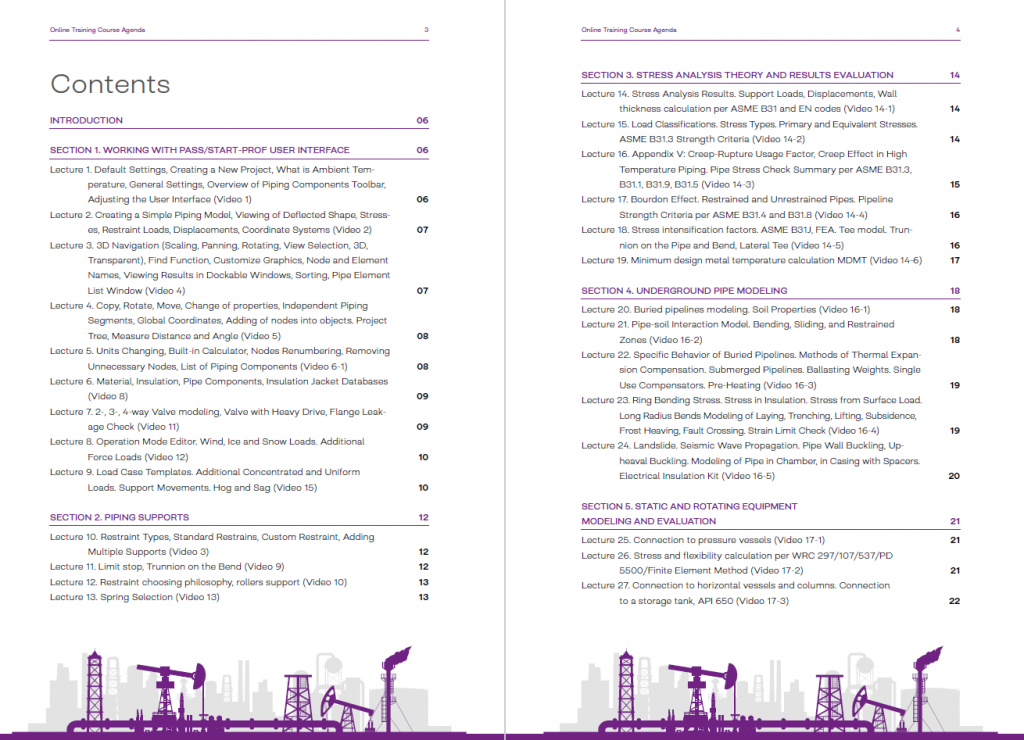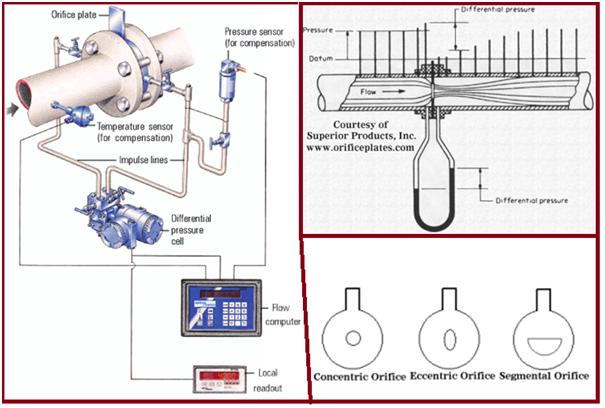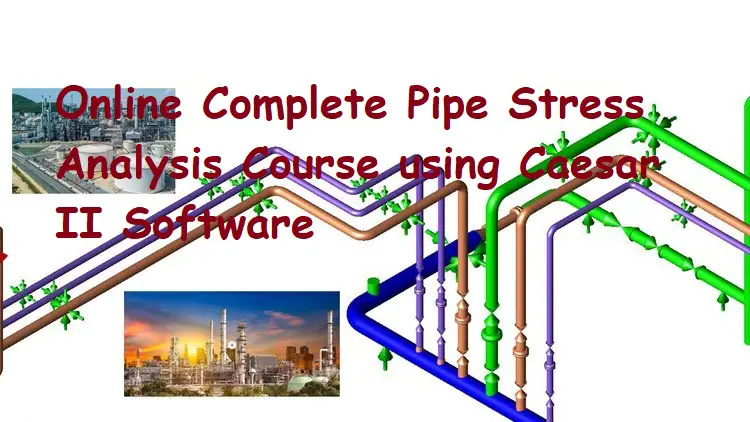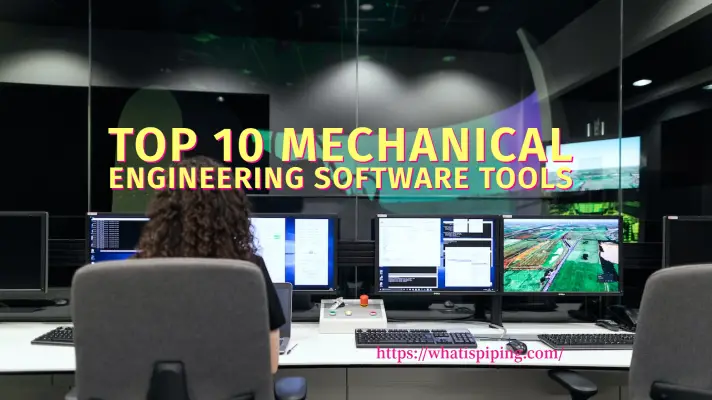The new version of the pipe stress analysis software PASS/START-PROF 4.86 is released and can be downloaded from the official PASS website! A free 30-day trial can be downloaded here. The detailed official list of changes in PASS/START-PROF since 1965 can be found here. Available the complete pipe stress analysis training course based on PASS/START-PROF.
Have a look at the new fantastic features that PASS prepared for you.
New Codes and Code Updates
Remark: the ASME B31.3-2020 and ASME B31.1-2020 codes was incorporated in September 2021, in the previous version 4.85. PASS/START-PROF automatically calculates the stress intensification factors (i) and flexibility factors (k) following the requirements of ASME B31J – 2017
- Updated code ASME B31.1-2022 Power Piping to the latest version
- Updated code ASME B31.8-2020 Gas Transmission and Distribution Piping Systems to the latest version
- Updated code ASME B31.9-2020 Building Services Piping to the latest version
- Updated code EN 13480-3:2017+A1:2021 Metallic Industrial Piping to the latest version
- Updated code SP 36.13330.2012 to the latest version
- Updated pressure-temperature ratings for flanges to the latest version ASME B16.5-2020
- Updated standards in databases to the latest versions: ASME B16.9-2018 (Bends, Tees, Reducers), ASME B36.19-2022, ASME B36.10-2022 (Pipes)
- Updated wind, snow, and ice load codes to the latest versions: ASCE 7-22 (USA), IS.875.3.2015 (India), AS-NZS.1170.2:2021 (Australia/New Zeland), NBC 2020 (Canada), CFE 2020 (Mexico), GB 50135-2019 (China), SP 20.13330.2016 addenda 3
- Added Dubai wind code 2013
- Added Blast Load (DNV RP D101)
- Added seismic codes: ASCE 7-22 (USA), IBC, NSR-10 (Colombia), KBC 2016 (South Korea), UBC 1997, NBC 2020 (Canada), CFE 2015 (Mexico), EUROCODE 8 EN 1998-1 (2013), TKP EN 1998-1-2011 (Belarus), IS 1893:2016 (India), AS/NZS 1170.4-2007 Amendment 1,2 (Australia), Seismic Code for Dubai 2013, SP 14.13330.2018 (Russia), GB 50011-2016 (China), SP RK 2.03-30-2017* (Kazakhstan), KMK 2.01.03-19 (Uzbekistan)
- Added codes GOST 33962-2016, GOST 33964-2016, and GOST 33965-2016
- An updated material database with material properties required by the late code editions
Here you can find the full list of available codes in PASS/START-PROF: pipe stress codes, equipment codes, standards for pipes, bends, tees, reducers, flanges, valves, beams, wind, snow, ice, seismic codes, constant and variable spring tables.


Finite Element Analysis Integration
PASS/START-PROF is now directly integrated with PASS/NOZZLE-FEM Software. It allows to automatically calculate:
- Stress intensification factors (i) and flexibility factors (k) for all tees, bends, and trunnions in the whole model can be automatically calculated using the finite element method (FEA) on-the-fly.
- Vessel nozzle and tank nozzle stuffiness, allowable loads, and stresses in the nozzle-shell junction can be calculated using FEA on-the-fly automatically for all nozzles in the model.
A detailed description can be found here
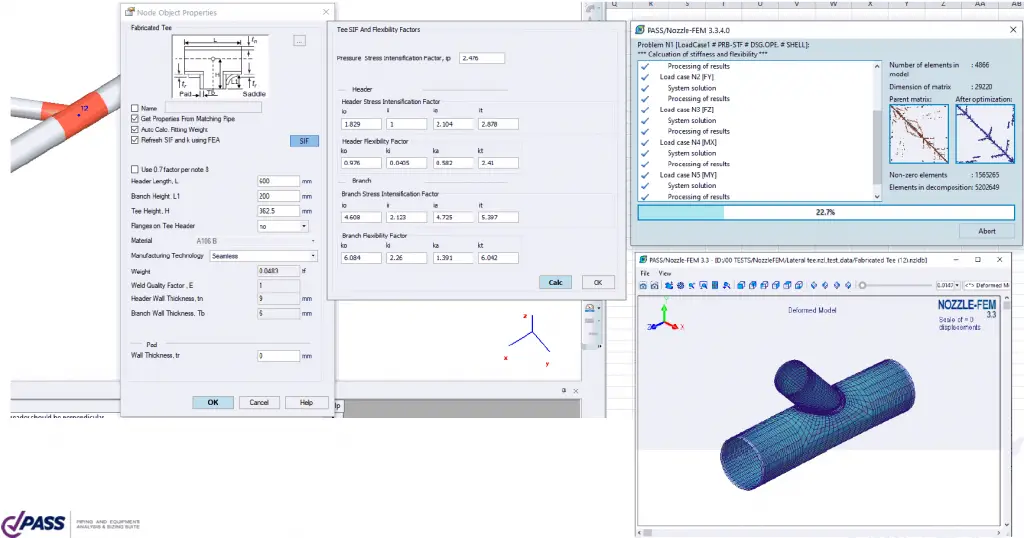
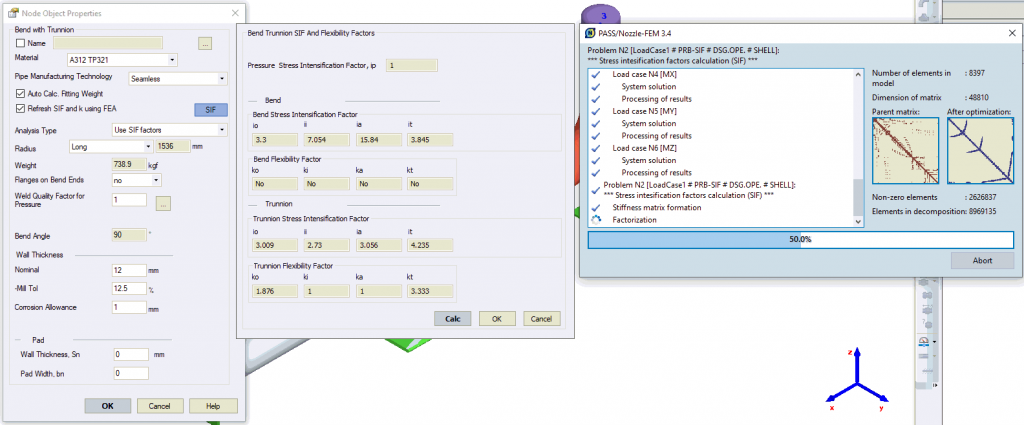

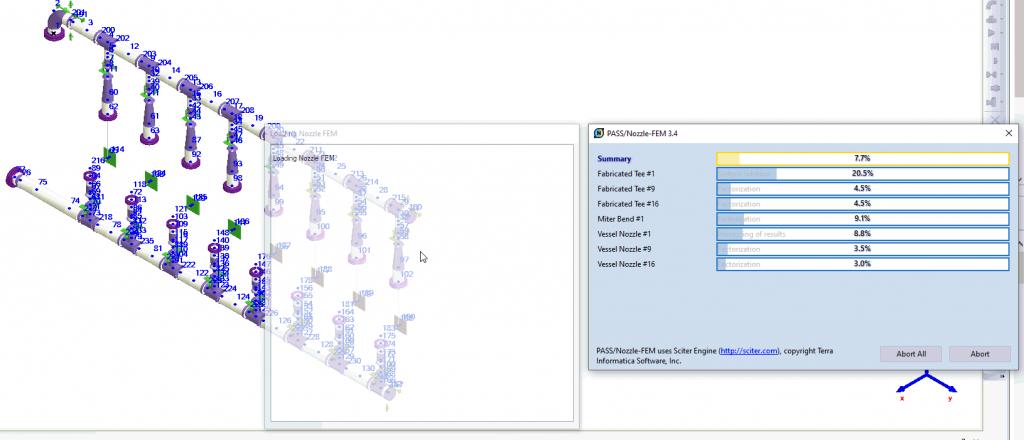
New Capabilities
Added the new MS Word report generator. It has a title page, and contents, and is generated automatically based on the templates, that can be customized. You can insert the logo of your company, change the font, layout, etc.
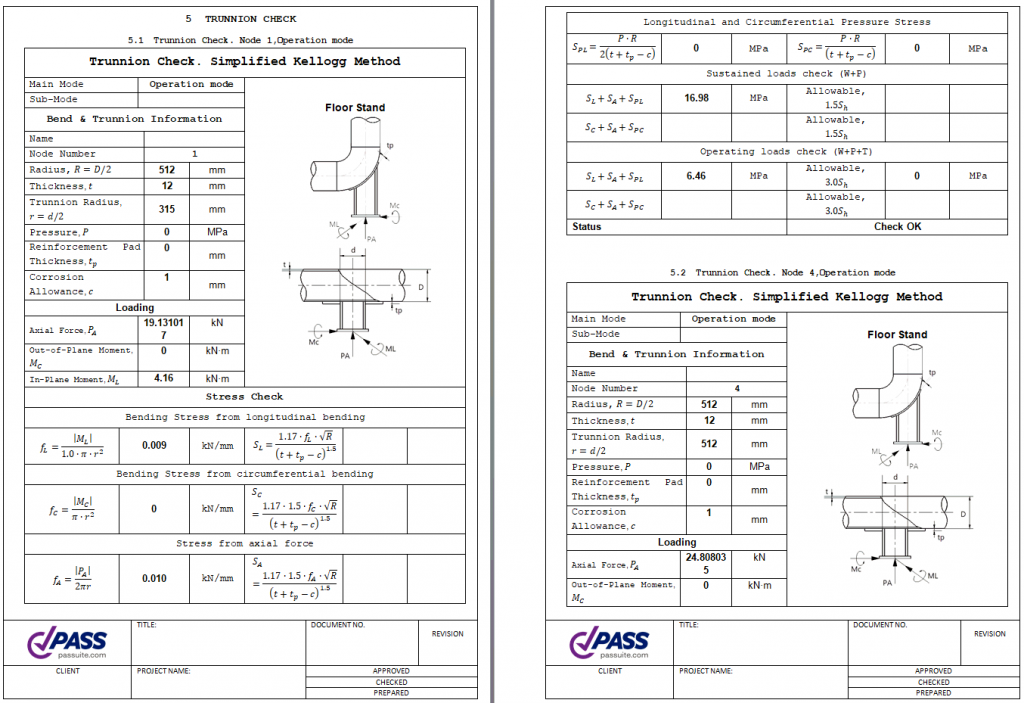
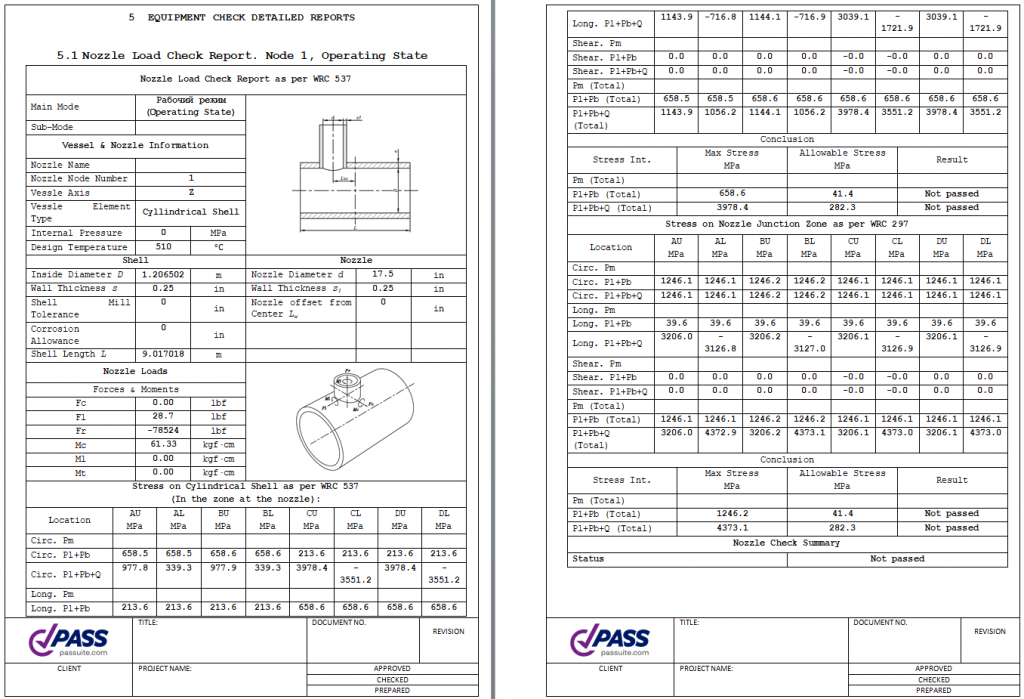
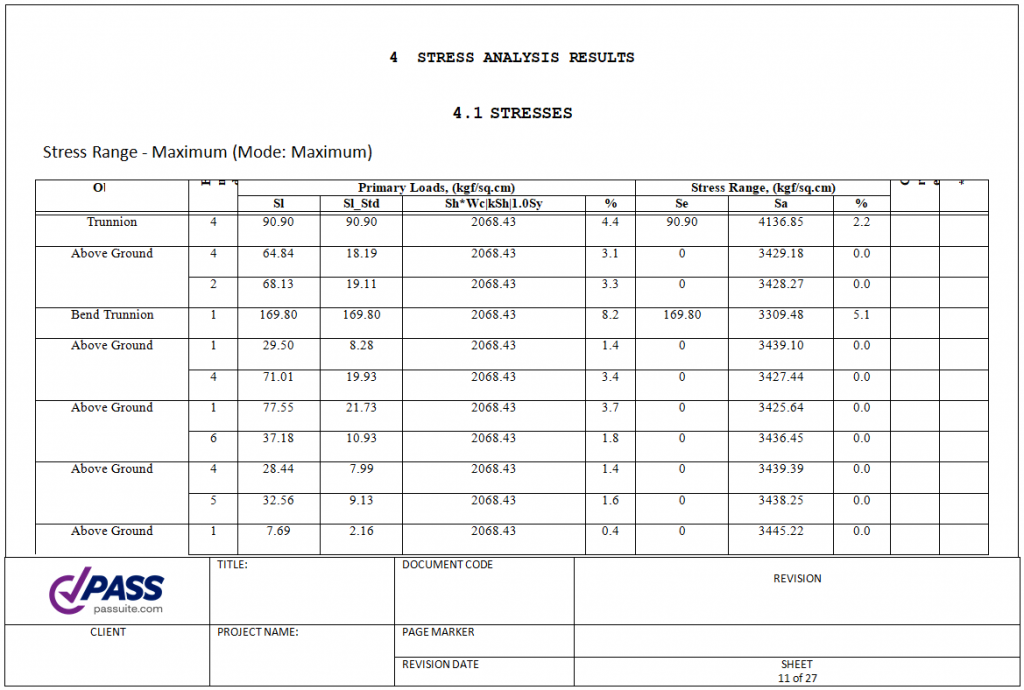
Added ability to model the internal restraints. Internal restraint allows for example to model the resting support which is connected to another pipe or beam element. It allows for taking into account friction, single-directional restraints, and gaps. Also, it allows modeling the pipe connection to the column, and connection to the skid, ramp, etc. Example. The pipe lies on the resting support, which is connected to the frame made of I-beams. Between the frame (node 4) and pipe (node 13), we insert a rigid element. On the rigid element at the distance of half pipe diameter, we insert node 16. In this node, we insert the internal restraint that model resting support.

Added the new object Beam, a two-node element, that allows modeling the steel or concrete structure, working in the same model with pipes. Beam elements can have different sections: I-beam, Channel, Angle, etc. Profiles can be taken from the beam section database
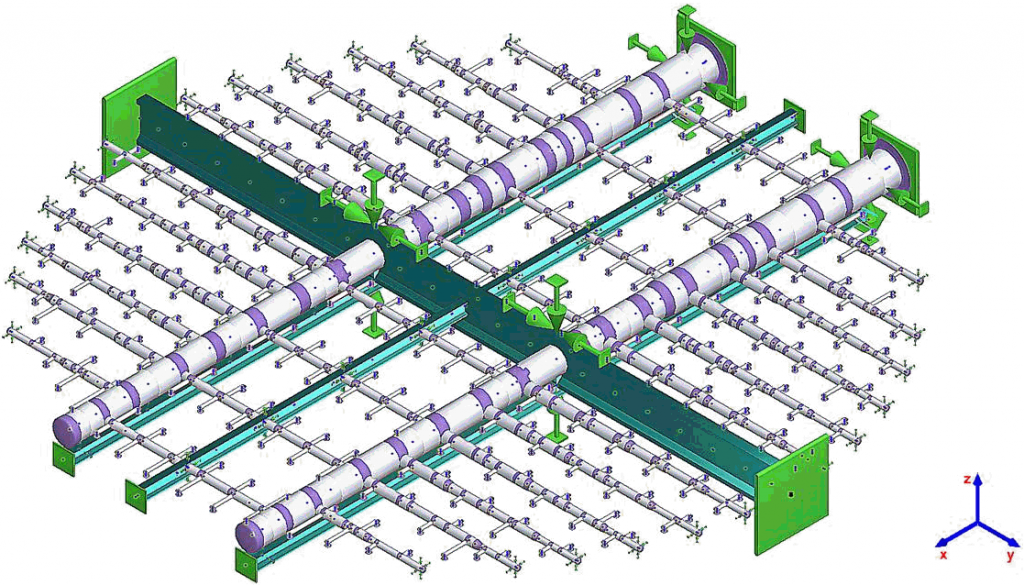


Added the new object Flexible Element, a two-node element, that allows modeling the bellows or flexible hose

Added the new object Cone, a two-node element, that allows modeling of the reducer. It is the same as a reducer object but defined as a two-node object

Added the new object Single Flange and Axial Coupling

Added the new objects Trunnion on the Bend and Trunnion on the Pipe. Stresses can be analyzed using Kellogg Simplified, Kellogg Exact, or Finite Element Analysis (FEA) due to integration with PASS/NOZZLE-FEM
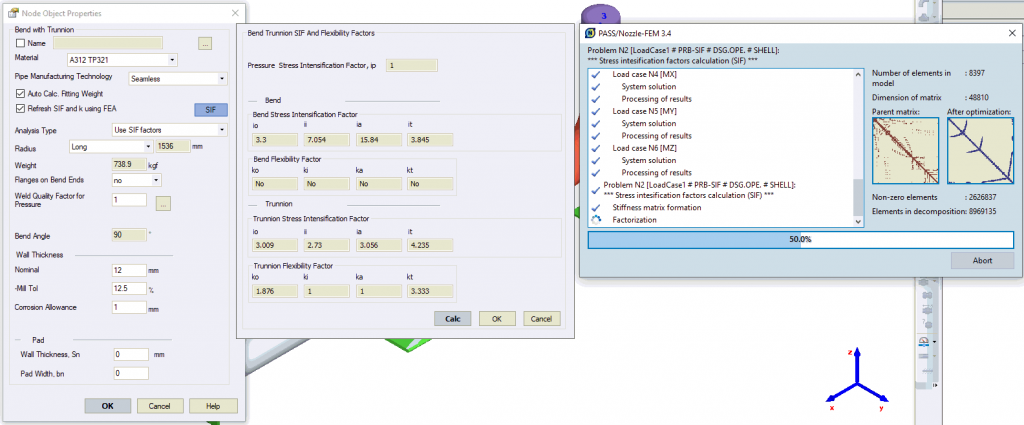

Added ability to specify the type of expansion cushions for district heating networks (soft, normal, hard)

Added ability to define the Lines. Lines can be colored and can be hidden, also hiding the stress analysis results for the hidden lines

- For the floating window “Pipes List” added the ability to copy data into MS Excel and backward using the clipboard
- Added the new floating window “Node List” with the ability to copy data into MS Excel and backward using the clipboard.

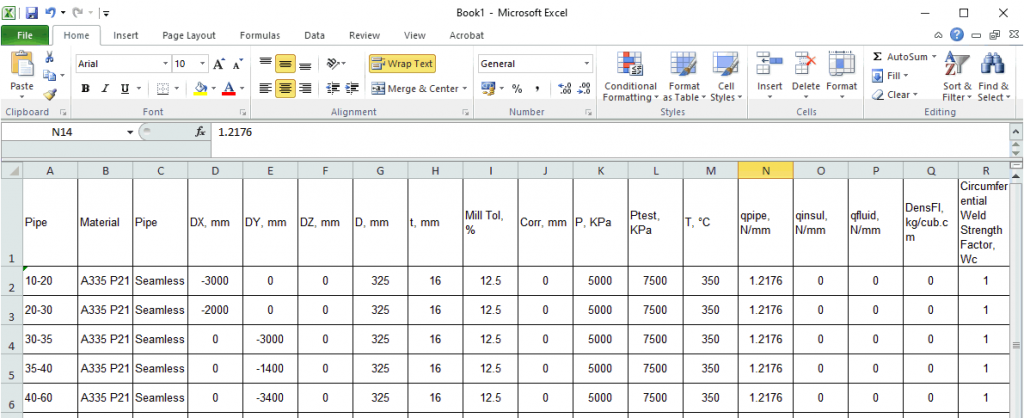
Added pipe-support spacing calculation for ASME B31.1, ASME B31.3, ASME B31.4, ASME B31.5, ASME B31.8, ASME B31.9, ASME B31.12, and some other codes
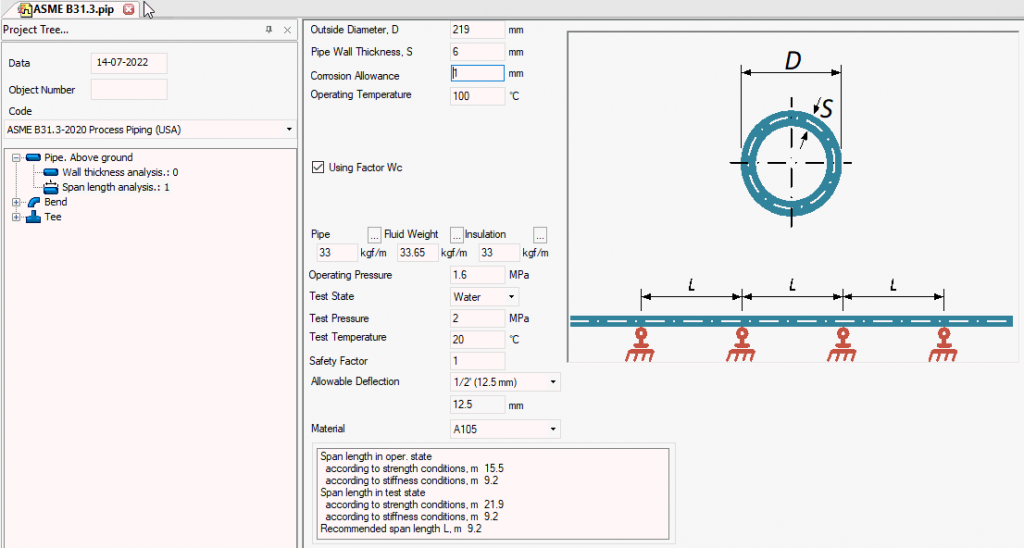
Added tee wall thickness calculation against pressure for ASME B31.1, ASME B31.3, ASME B31.4, ASME B31.5, ASME B31.8, ASME B31.9, ASME B31.12, and some other codes

Improved the Angular Expansion Joint model. Users can choose the type: gimbal or hinged. Added ability to consider the effect of the temperature on the bellows’ stiffness and allowable rotation angle. Added ability to consider the pressure and friction effect on the expansion joint stiffness


Improved the Lateral Expansion Joint model. Users can choose the type: “Lateral three or more tie-bars”, “Lateral two tie-bars pinned (plane) expansion joint”, or “Lateral two tie-bars spherical expansion joint”. Added ability to consider the effect of the temperature on the bellows’ stiffness and allowable lateral deformation. Added ability to consider the pressure and friction effect on the expansion joint stiffness

Improved the Axial expansion joint model. Added ability to consider angular and lateral stiffness automatically and automatic calculation of the equivalent axial deformation considering the rotational angle and lateral deformation

Project Tree now can be docked to the side panel

Databases
- Increased the speed of databases operation
- Added Flange Database and Single Flange Database. Included in the flange database: ASME B16.5-2020, ASME B16.47-2020 (Serie A, Serie B), EN 1092-1:2018, GOST 33259
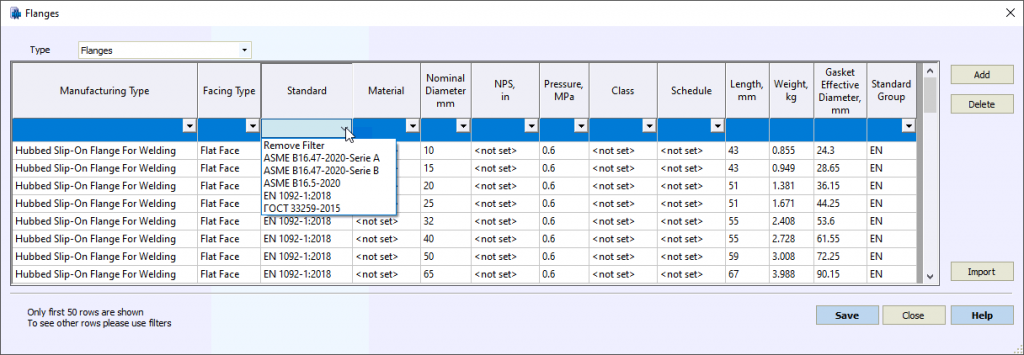
Added Gasket Database. Included in the gasket database: ASME B16.20-2017, EN 1514-1, EN 1514-2, GOST 15180, GOST 28759, GOST 52376, GOST 53561, OST 26.260.454, OST 26.260.451, etc.
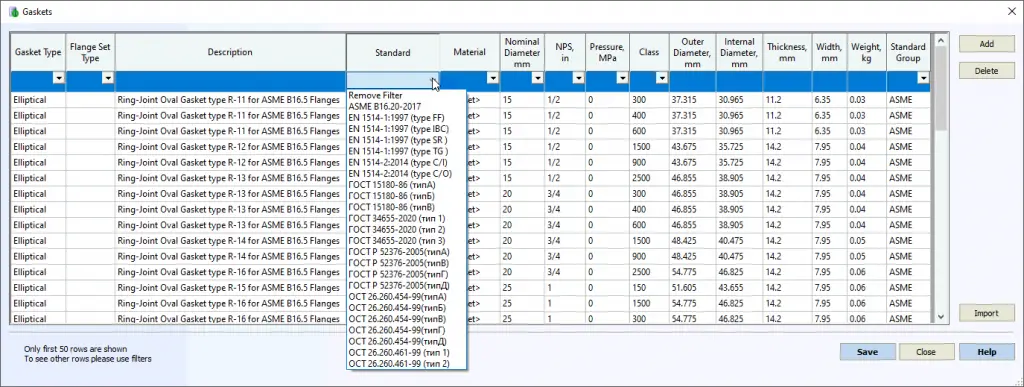
Added Valve Database as per ASME B16.10-2022
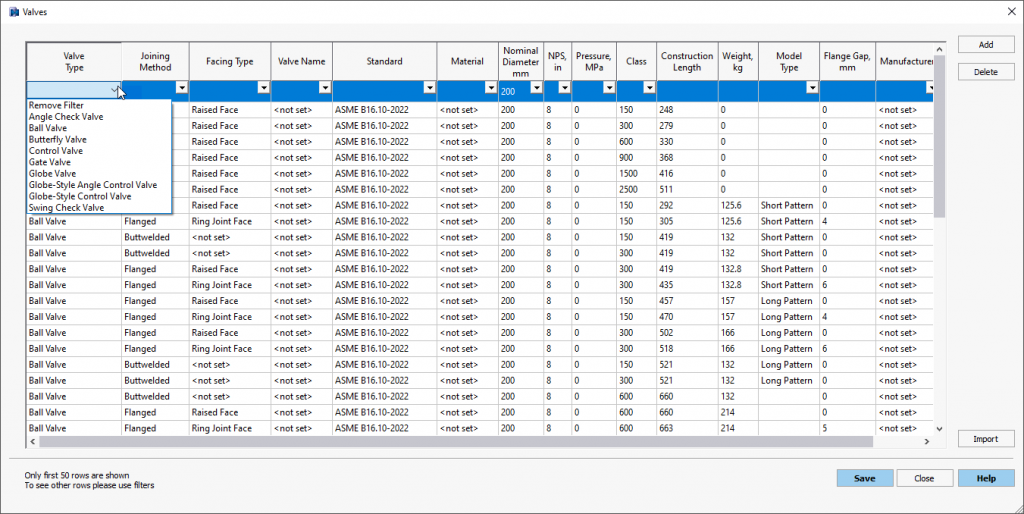
Added Beam Section Database. It contains the cross-section properties for structural beam elements
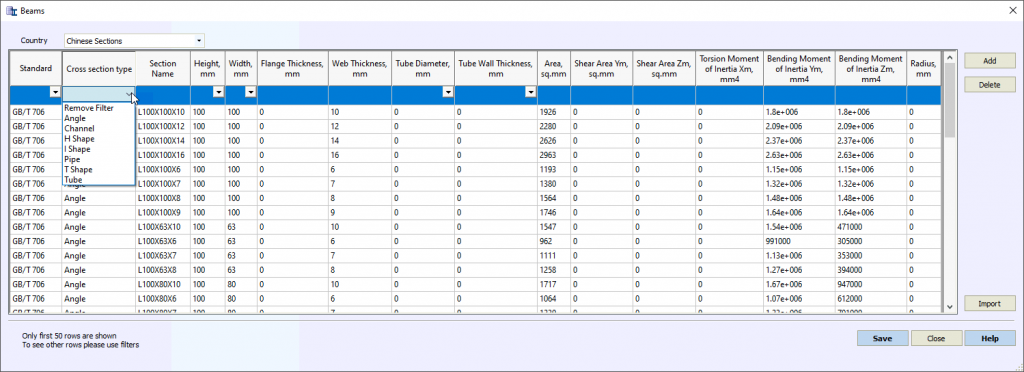
Added database with material properties for beam elements that contain AISC and Chinese sections
User Interface Changes
- Added translation into Spanish: whole user interface, Word reports
- Added automatic update feature. Now software can be updated automatically through the internet
- Added wireframe representation of the model
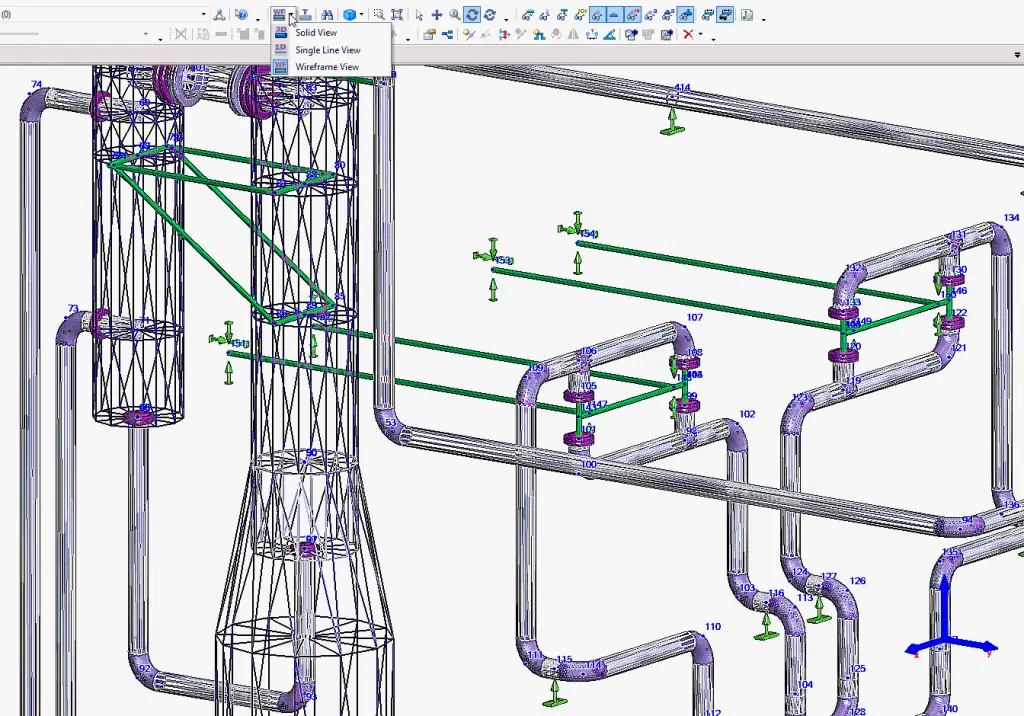
Added ability to select the objects using the frame with a mouse

External Interfaces
- Added import from Autodesk Civil 3D
- Nowadays many CAESAR II users migrate to PASS/START-PROF due to its very affordable price, very strong capabilities, and fast development that satisfy all user’s requests. To support them the import of the CAESAR II function was significantly improved. Now it is much smarter and converts much more details correctly
- Fixed test pressure conversion
- Added ability to open cii files created using ISOTracer
- Added uniform loads “U” and concentrated forces “F” conversion
- Added complex load cases conversion like “2W+2T1+1.2P1+1.3U1”-2.2U2+1.5F1
- Added flange class, material, and code conversion
- Added import of structural elements (beams)
- START-AVEVA module: Added ability to import the bends with trunnions
- Added brand new import function from MS Excel. The function allows to import pipeline geometry from an Excel spreadsheet (“.xls”, “.xlsx”, “.csv”), created using one of several special templates




Added export into LICAD. In LICAD v.11 added a function to import START-PROF spring data https://www.lisega.de/en/licad/

Added export of support loads into CSV file
Training course
- Recorded the complete pipe stress analysis training course based on PASS/START-PROF. Download the training agenda here. Enroll in the course here.
